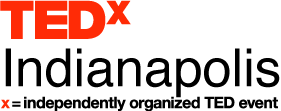Dionne Custer Edwards is a writer and arts educator serving K-12 students through arts partnership with artists, teachers, and the community at The Wexner Center for the Arts, where she created PAGES, a multi-visit writing-based arts program for high school students and WorldView, an exploratory, global-minded, cross-cultural arts program.
She completed a Master of Arts degree in Arts Education and Creative Writing at Antioch University, where she focused research on the teaching artist practice, arts partnerships, and arts integration in K-12 education. She also holds a Bachelors degree in English from Ohio State University.
For 15 years, Edwards served in Central Ohio communities as an artist, educator, and advocate, focused on arts integration in K-12 education, creative writing, the teaching artist as a practice, performance art, and developing arts-integrated programs that build interdisciplinary experiences for youths and teens. Community-based partnerships and projects in the arts and education are commitments she integrates in her work, and works in ongoing arts partnerships and community service with dozens of local organizations including Thurber House, Ohio Arts Council, the Greater Columbus Arts Council, and TransitArts.
In 2006, Edwards received a Fellowship for Emerging Women Leaders in Nonprofit from the Academy of Leadership and Governance at the Jefferson Center for Learning and the Arts. For her work and leadership in the arts, she was recently awarded and completed a leadership fellowship with Americans for the Arts.
She lives in Columbus, Ohio with her husband and three sons.
 Big Idea: “Beautiful Distractions in 21st Century Learning”
Big Idea: “Beautiful Distractions in 21st Century Learning”
When we think of potential distractions in a typical K-12 classroom, we might envision: students passing notes, staring out the window, doodling, whispering side conversations, or, heaven forbid, texting. What if we could design learning environments as experiences with built-in intentional distractions, allowing a complex and dynamic learning process? In this kind of learning environment, we would embrace, even engage distraction: a choir of inquiry, a beautiful collision of difference (in opinion, perspective, experience), or a flexible lab for hands-on, interactive problem solving. What if engaging distraction is learning?

